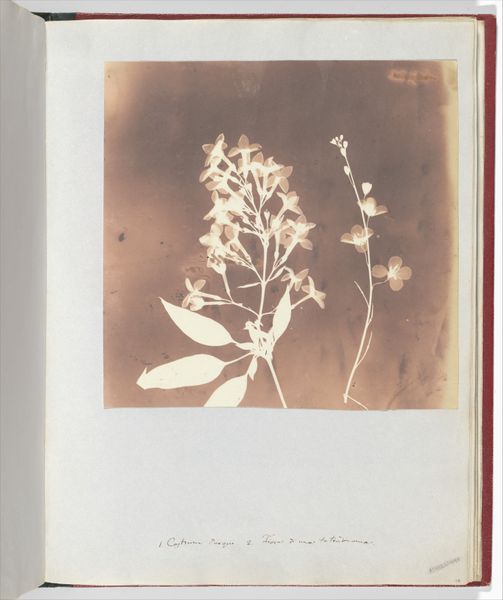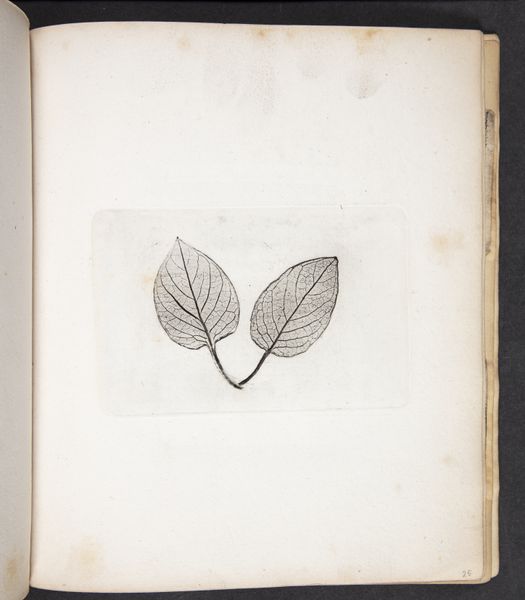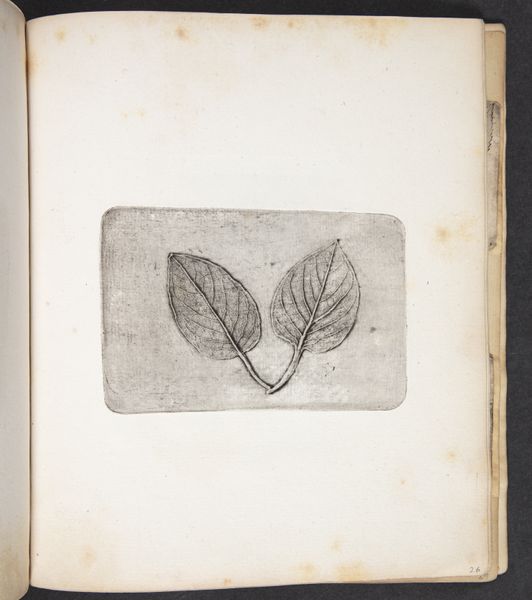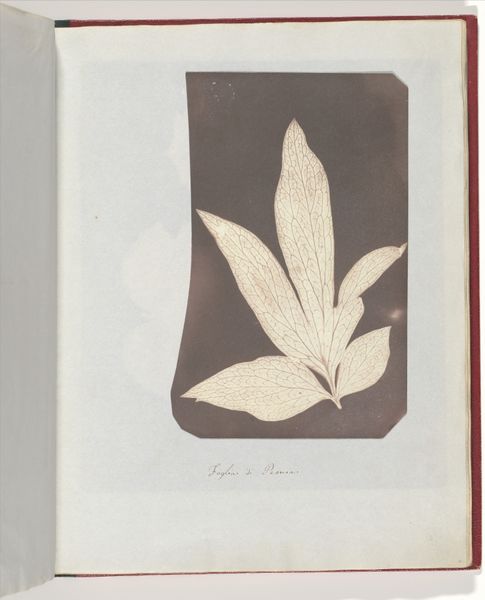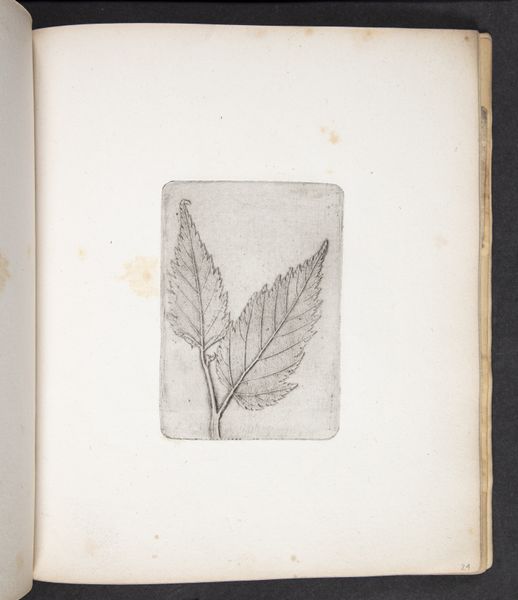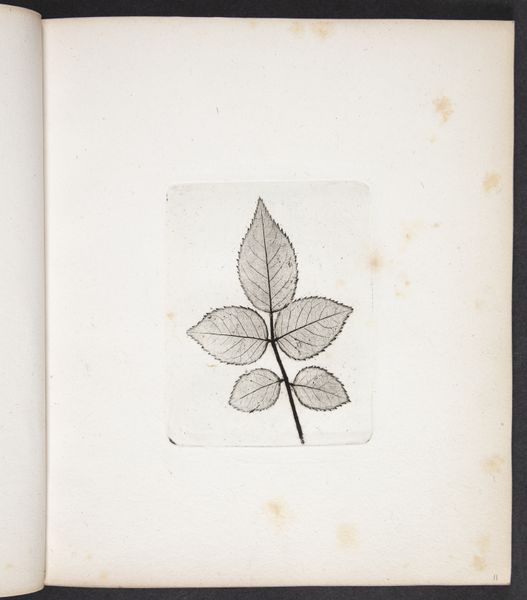
1. Foglia di Fico. 2. Foglia di Spino bianco, ossia Crataegus 1839 - 1840
0:00
0:00
print, contact-print, paper, photography
# print
#
contact-print
#
paper
#
photography
#
romanticism
#
naturalism
Dimensions: 21.8 x 18.5 cm (8 9/16 x 7 5/16 in.)
Copyright: Public Domain
Curator: This fascinating photogenic drawing by William Henry Fox Talbot, titled "1. Foglia di Fico. 2. Foglia di Spino bianco, ossia Crataegus," created between 1839 and 1840, captures the delicate forms of leaves with a spectral beauty. Editor: Spectral indeed! My first impression is one of fragility and ephemerality. The way the light etches the veins of these leaves, they appear almost ghost-like against the dark backdrop. It's a very quiet, contemplative image. Curator: It’s a rather direct rendering of nature, pushing beyond mere representation towards something… symbolic. Consider the fig leaf, deeply connected to narratives of shame and knowledge since antiquity. It brings an intriguing psychological weight, doesn’t it? Editor: Absolutely. And in contrast with the smaller, spiky leaves—hawthorn leaves, or Spino bianco, known for its protective properties in folklore. Talbot is consciously arranging symbols relating to nature's duality, it's simultaneous giving and withholding. Moreover, think of this as part of a very particular social ecology: photography at this moment, especially botanical studies, were being taken up in natural sciences to further systems of categorisation. What systems is Talbot engaging in, or challenging? Curator: I agree it speaks to the power and perhaps limitations of systems that classify and study the natural world. The flatness emphasizes a loss of natural depth but offers its own, alternative method of seeing. Do you think the photographic process itself plays into that at all? Editor: Undoubtedly. Photography's capability to freeze a moment also gives a false impression of permanence. Look how quickly photography then became implicated in colonization. This leaf, seemingly suspended in time, is forever displaced and abstracted. So many leaves could be held up as symbols in 1840's England! Curator: Perhaps this seemingly straightforward study encourages deeper thinking on time, memory, and displacement, or just a poignant reminder of how we, and what we depict, become subjects caught within broader narratives, historical and contemporary. Editor: Precisely. This print opens up space for important dialogue between what something appears to be versus the much larger narratives it participates in, which continue to change in their meaning.
Comments
No comments
Be the first to comment and join the conversation on the ultimate creative platform.
